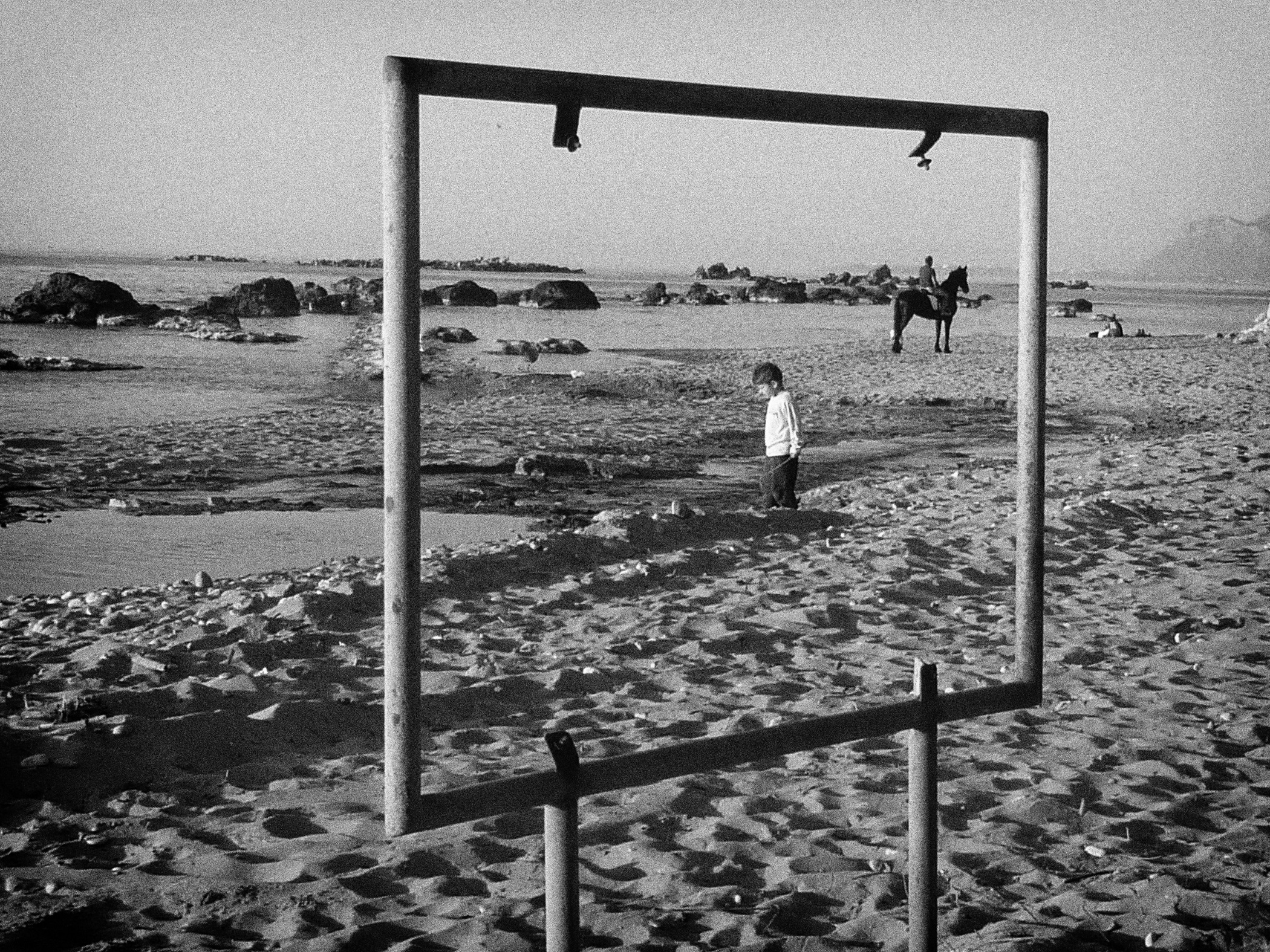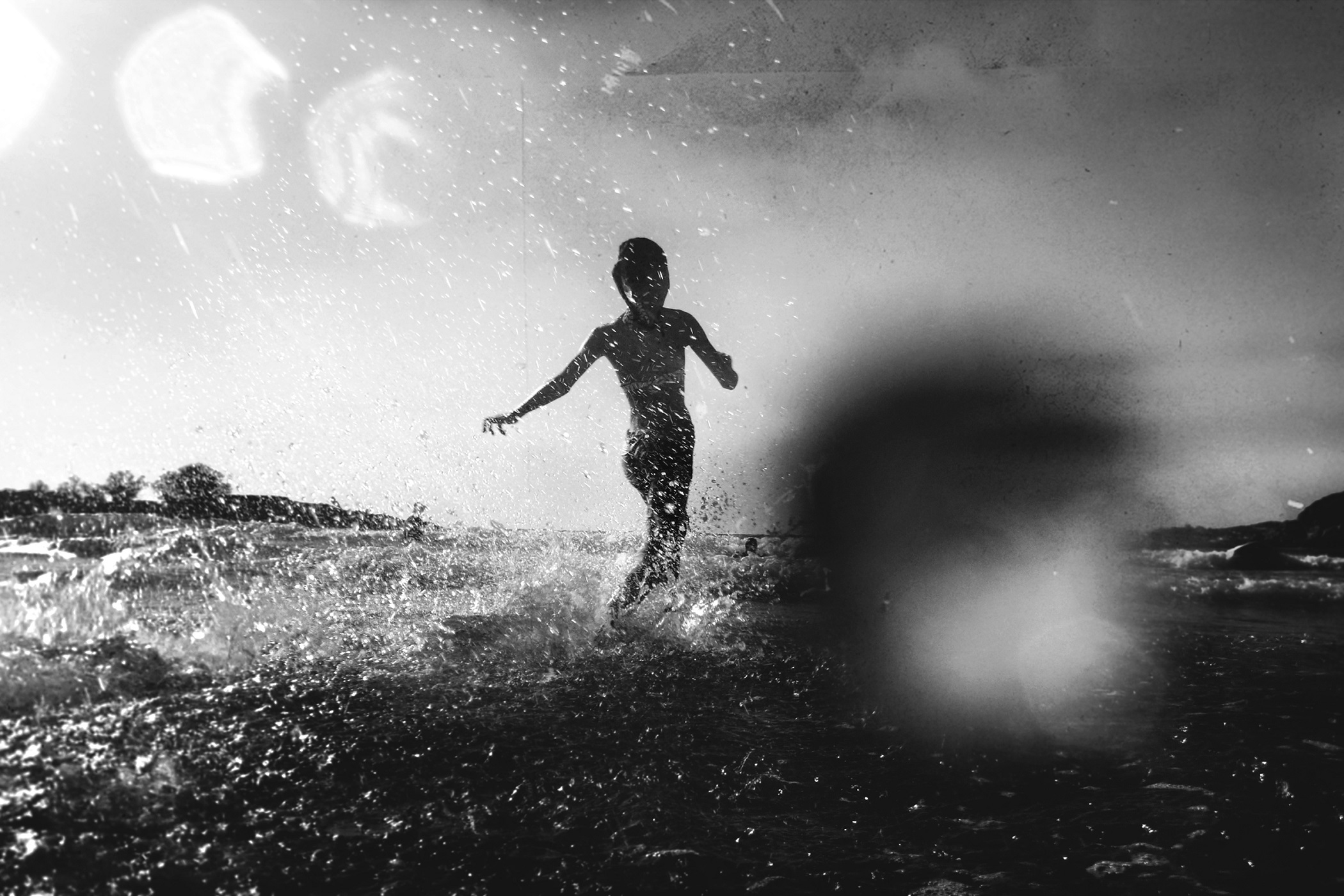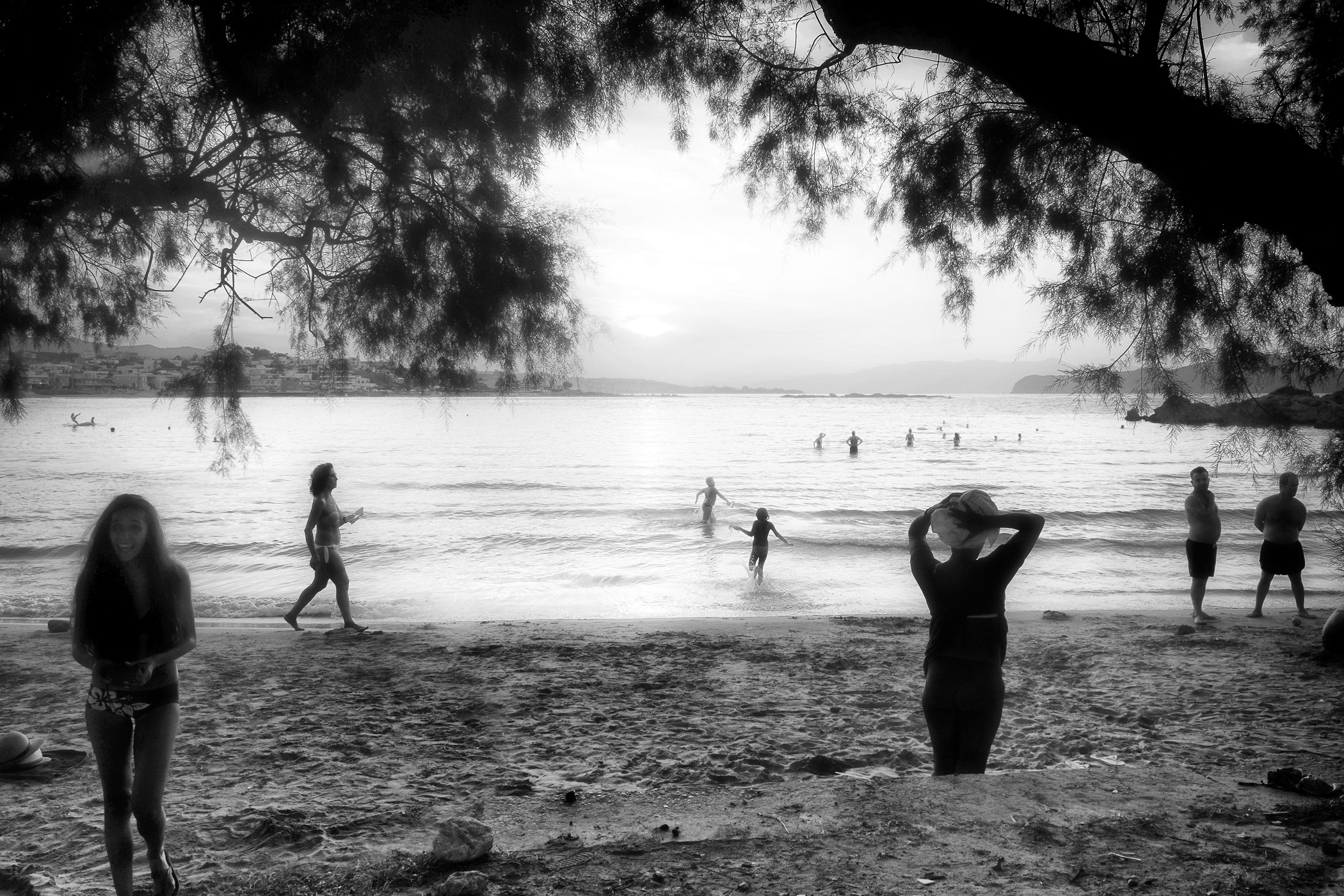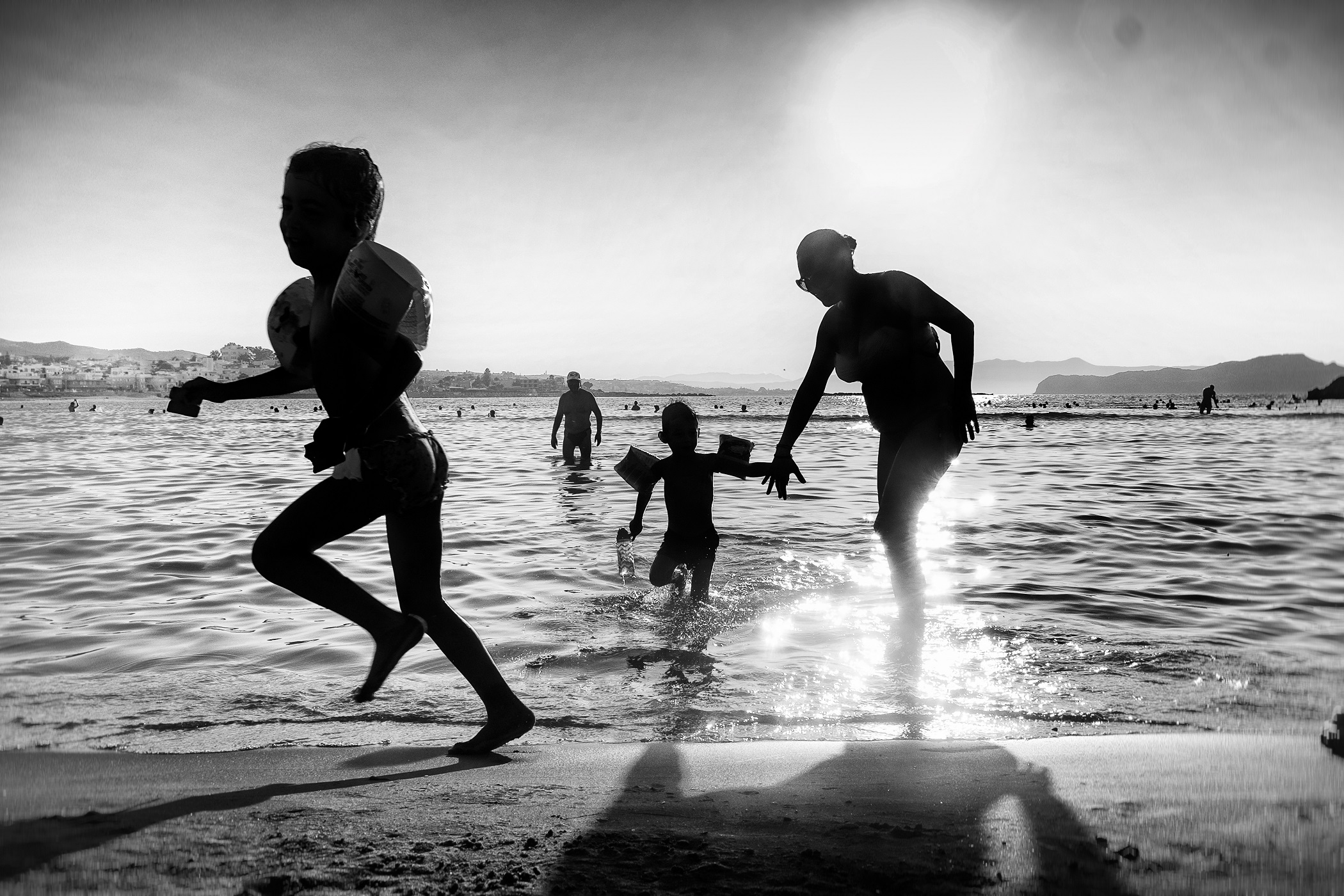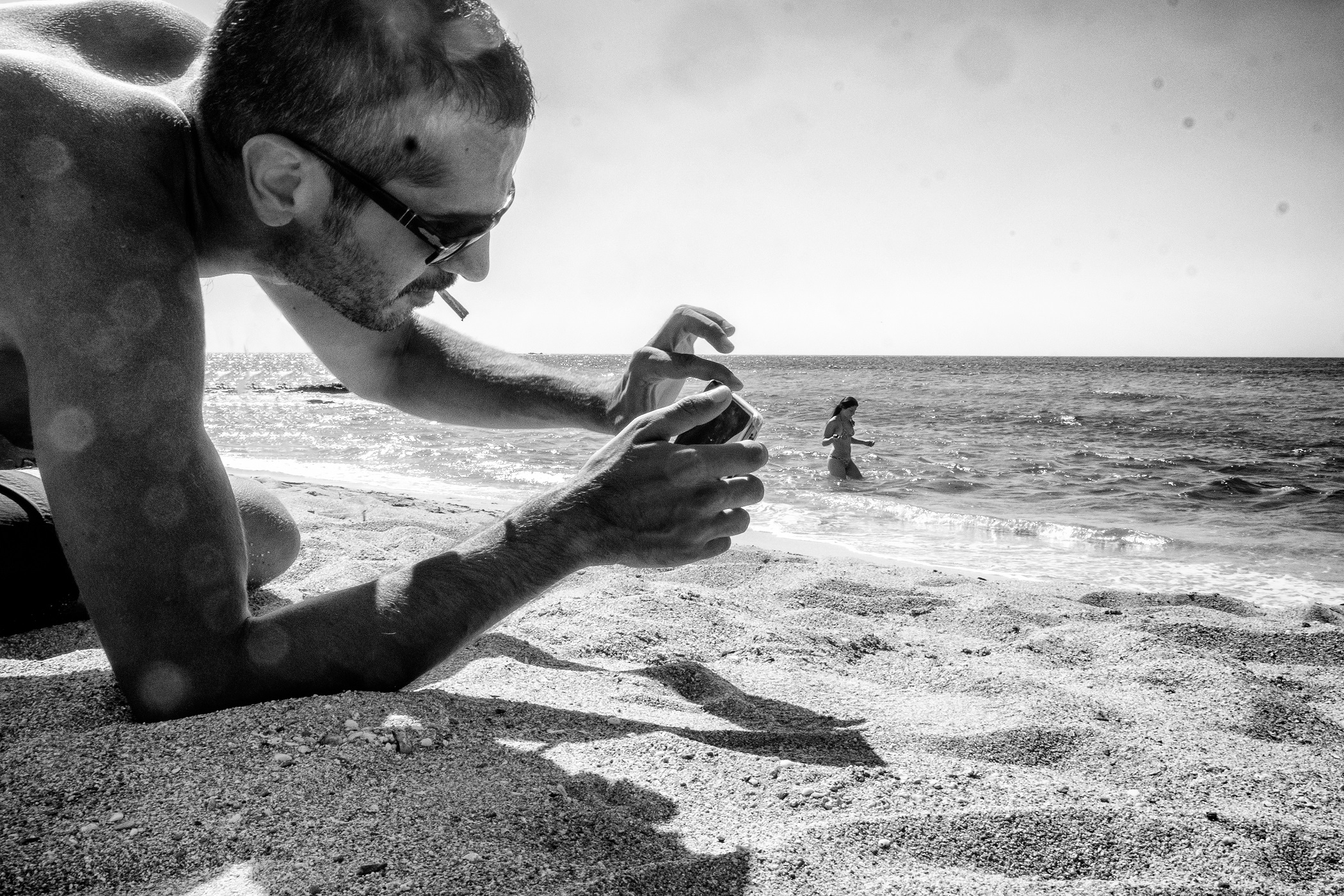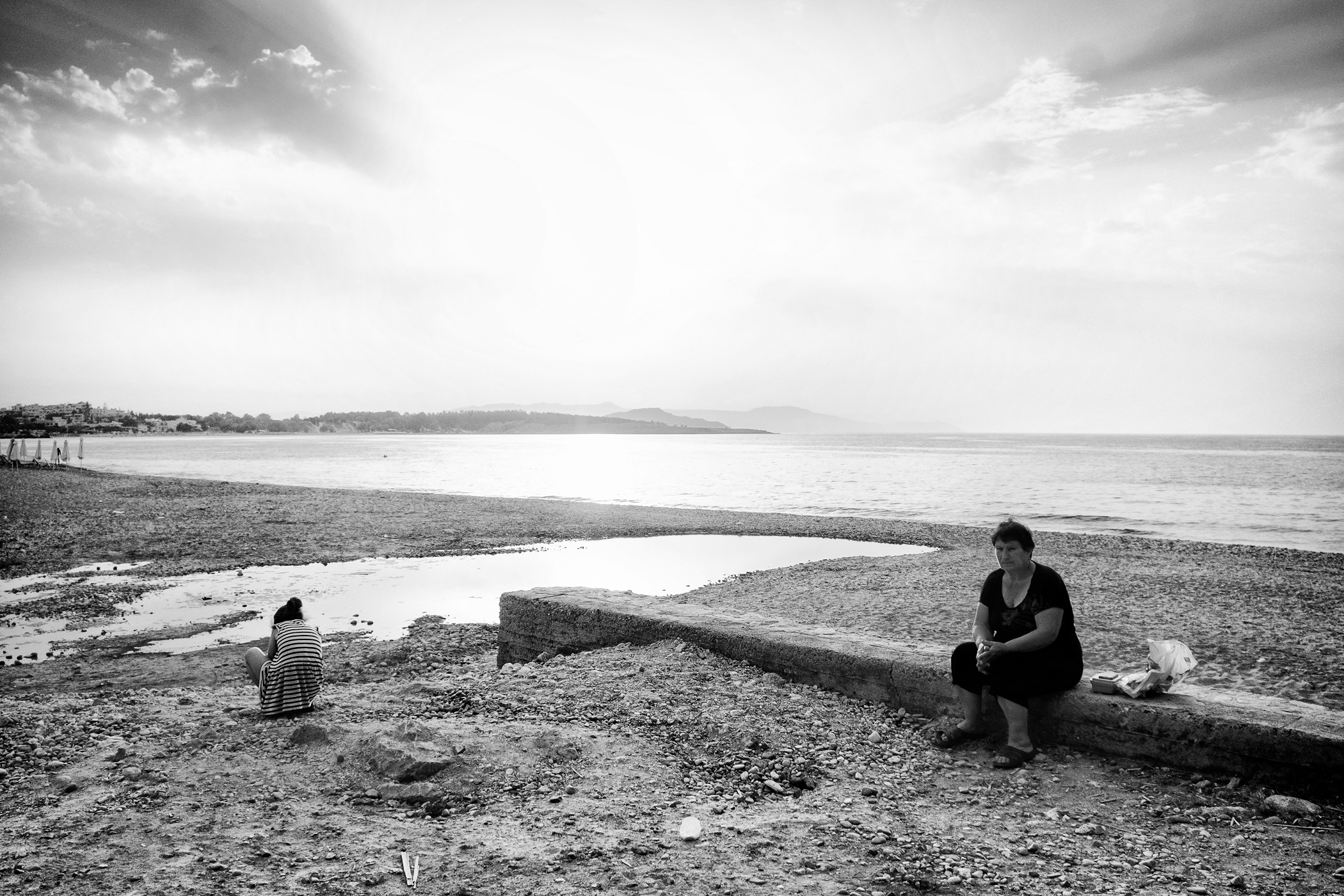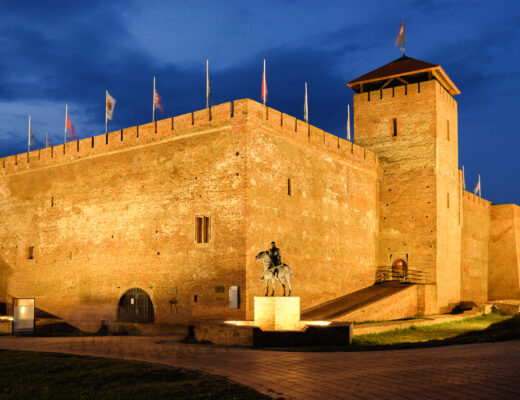Street photography does not have to be only on streets. It can also be on the beach. The photos you will be seeing in this article are mostly taken in Chania. A great majority of these photos are taken in just two beaches, Nea Chora, and Agioi Apostoloi.
These beaches get quite crowded during summer time with locals and tourists, old and young people, women and men. The juxtaposition of all these very different people who meet in the beach to share the sun and the sea can be great material for photography.
In these photos, there were no special arrangements made, there was no travelling done to find the perfect beach. These are places close to where I stay, beaches where I usually prefer to go at a hot summer day.
Sometimes you need to get out of your comfort zone to take pictures. But other times, knowing the place and feeling comfortable with its surroundings, can be great for photography. When I know the place I shoot, I know how the light feels at different hours of the day, when the reflections and silhouettes are more beautiful, when the shadows are longer. I know where to sit and what to look for. I can use all this knowledge to my advantage.
The beach of Nea Chora and Agioi Apostoloi are places everyone knows in Chania but for me, they are unique.
Nea Chora and Agioi Apostoloi are not as famous as Elafonissi or Mpalos, places which attract visitors from all over the world, but many times I find myself wondering, what if Agioi Apostoloi were located on the south of Crete? What if, it was much more difficult to reach them? What if they were no cafeterias and cantinas? Could it then be seen as more beautiful? Could their beauty then be less “common” and more “unique”? The fact that you might see a place everyday makes it common. But common can be equally beautiful with that which is unique.
There is not one way to take photos.
Sometimes you need to walk a lot to spot what is of interest. But other times, you just need to stay put.
When I visit Nea Chora and Agioi Apostoloi I usually don’t move a lot. I know where to sit and what to look for. Many times I don’t go to the beach with the sole purpose of taking photos. I just have the camera with me. Many of these photos were taken from the comfort of my towel.
I sit relaxed after enjoying a long swim, with my camera in my bag. I start observing the people and the scenery. And it comes naturally that I see things that are interesting. Then, just like everyone else on the beach, I take my camera to take some photo. I am a man with his book, his snacks and a camera enjoying his sunbath and taking from time to time some shots. I am not attracting any special attention.
For me, street photography is about learning to work with limitations. Limits force you to think and become creative.
Find a great spot to enjoy the sun where there are interesting things happening. Accept that you will not move from that spot, enjoy your time and don’t get stressed, observe and take photos.
Having said that doesn’t mean that you always have to look at the sea. You might want to look elsewhere, behind or on the side of you. There are things happening around you.
And your spot doesn’t have to be a towel. You can sit beside an ice cream truck or at any other point that you find interesting. But try to stay put. Try to spend some time observing what is happening. Pay attention to the stories that unfold around you. Be patient. Don’t get too stressed to take as many photos as you can.
I also like to have just one lens with me. Instead of looking on your bag for the right lens, accept that all you have is one lens and start looking how to take the photo with the lens you have. The limitation frees you. Rely on knowledge, observation and creativity. Accept that these are the only things you have to pull this off. Limits can be good.
Smaller, is also good.
In some kinds of photography the less you become noticed the more free you are to take great photos. In wedding, architecture or landscape photography, bigger bodies can prove useful.
For clients, a big camera and a big lens might make you look more “professional”, even if the piece of the equipment you are holding is really not that great or you are not that much of a professional.
But big is not good at all when speaking about street or documentary photography. In these kinds of photography you don’t want to look like “the professional” with the big camera”. You just want to pass unnoticed.
For the past years I am using the Fujifilm mirrorless system and while it is truly a very professional piece of machinery with great quality lenses, to the eyes of a common observer it just looks like a small camera, thus a camera a “professional” wouldn’t use.
But appearances can be deceiving.
At a beach, a man with a small camera is just another tourist taking pictures of a beautiful sunset or of the sea. That’s what you want.
I personally use a Fuji X-E3 system with the kit lens (which is great by the way) but there can be other combinations with lenses that can make your camera look even smaller. I personally like to use the kit lens since it has a bit of a zoom which sometimes I use.
Of course there are other things to take in consideration.
In beaches there is sand and sun and sea water and children running around screaming with sand on their feet and sea water on their bodies. They can get close to you. And it can become dangerous to your precious camera. This is a risk that you will have to live with, if you want to take photos on the beach. But keep a cloth with you to clean your camera!
Some more tips about photography at the beach:
– Use silhouettes: Beaches are great places to take silhouette photos. But even here you can either choose to be creative or you can take a cliché shot. Try to use silhouettes to tell a story and if you choose to take a cliché shot of people in the sunset, at least try to make it interesting by finding an interest frame.
– Be comfortable with manual mode: I think that especially in beach photography working with manual is quite important because you get to control details such as depth and how light is captured, how deep are the shadows. You can even choose to overexpose to create a specific atmosphere. Using manual mode effectively helps at the creative process since you can come closer to the idea of an image you have on your mind.
– Photograph at different hours: It is different to take photos on midday and quite different on sunset. Not only the conditions change but many times the people that you find on the beach change, the way they act, what they choose to do.
– Wear sunglasses (or not?): Some photographers say that wearing sunglasses is useful because you draw less attention and you avoid eye contact. Personally, I don’t like wearing sunglasses because I feel I don’t see clearly what I am taking a photo off and that annoys me. But if you don’t have such a problem, wearing sunglasses can be useful.
So, if I could summarize my experience from taking photos on the beach, it all adds up to those elements which make me feel comfortable taking photos, like knowing the beach and feeling like I am one of the people I am photographing, having a small camera which helps me get unnoticed and elements that might be seen as limiting but in reality they are pushing me to use all my knowledge of the place, my observation and creativity to achieve good photographic results. Also, many times, I don’t go to the beach with the sole purpose to take photos. It just comes out naturally. So hold your camera with you. You never know when you will feel like taking a photo.
This, of course, is not a general or a conclusive guideline, just my way of doing beach photography. Others might enjoy taking long walks on the beach and capturing the feeling that the people give. Or finding interesting characters to take portraits of them. It’s all good. Just be confident and take great shots. People are much more relaxed on the beaches, so don’t get too stressed. And there is still time till summer ends!


